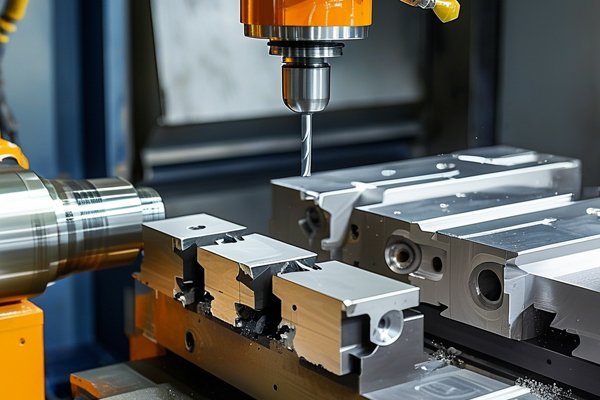: The Importance of Quality in CNC Machining
Did you know that surface integrity plays a pivotal role in determining the performance and longevity of machined parts? An astonishing 70% of mechanical failures can be traced back to surface defects, emphasizing the critical need for precision machining. For manufacturers, especially those specializing in brass components, understanding how to minimize these defects during CNC machining processes is essential for producing high-quality products.
Brass, an alloy of copper and zinc, is renowned for its excellent machinability and aesthetic finish. It’s frequently used in applications ranging from plumbing fittings to decorative items. However, the characteristics of brass also come with challenges, particularly when it comes to maintaining optimal surface quality. In this comprehensive guide, we’ll explore various techniques for reducing surface defects in brass parts during CNC machining, enabling manufacturers to enhance quality, reduce waste, and improve their overall production efficiency.
1.1 Types of Surface Defects
Before we can minimize surface defects, it’s crucial to understand what they are. Common surface defects in CNC machined brass components include:
1.2 The Impact of Surface Defects
Surface defects not only affect the aesthetic appeal of brass components but can also lead to functional impairments. For example, surface roughness can hinder the flow of fluids in fittings, while scratches and dents may cause weak points that develop into cracks under stress. Consequently, addressing these defects is crucial for ensuring the longevity and reliability of the final product.
2.1 Material Properties of Brass
Brass has unique physical properties, including varying hardness and brittleness, impacted by its composition. Understanding these properties is vital for achieving optimal machining results. Manufacturers should be mindful of how different grades of brass can behave during machining operations.
2.2 Tool Selection and Maintenance
The choice of tools plays a significant role in the surface quality of machined parts. Tools that are dull or damaged can lead to increased friction, resulting in scratches and an uneven surface finish. Regular inspection and maintenance of CNC tools are essential to ensure they are suitable for machining brass effectively.
2.3 Machining Parameters
Various machining parameters can significantly affect surface quality, including:
2.4 Environmental Factors
The machining environment plays a role in surface quality as well. Contaminants such as dirt or oil residue can introduce imperfections if not controlled. Moreover, temperature fluctuations can affect the mechanical properties of brass and the tools themselves.
Now that we understand the contributing factors, let’s delve into effective strategies for minimizing surface defects in CNC machining of brass parts.

3.1 Selecting the Right Brass Alloy
Choosing the appropriate brass alloy is crucial. For example, C36000 brass is highly machinable and offers excellent surface finish properties. Collaborating with material suppliers to select an alloy suited to your specific CNC machining tasks can make a significant difference in output quality.
3.2 Optimizing Tooling and Equipment
3.3 Fine-Tuning Machining Parameters
3.4 Controlling the Machining Environment
3.5 Implementing Effective Coolant and Lubrication Systems
Utilizing the right coolant and lubrication can significantly enhance tool life and surface finish. Selection should consider the specific operations being carried out. Flood cooling, for instance, can help manage heat and improve brass machining outcomes. Additionally, ensuring the appropriate mix of coolant can prevent oxidation of the brass surface during machining.
Even with careful machining practices, some defects may surface. Addressing these through post-machining processes can further enhance the quality of brass parts.
4.1 Surface Finishing Techniques
After CNC machining, several finishing techniques can be applied to improve surface quality:
4.2 Quality Control Procedures
Implementing rigorous quality control checks throughout the machining process can help identify defects early on. This may involve measurements of surface roughness, visual inspections, or using non-destructive testing methods.
In summary, addressing surface defects in CNC machining of brass parts is not just about aesthetics; it’s fundamental to product performance and durability. By understanding the causes of defects and employing strategic techniques, manufacturers can improve surface quality, reduce waste, and enhance overall efficiency.
Taking a proactive approach to the selection of materials, tooling, and machining parameters will lead to better results and greater customer satisfaction. Remember that quality assurance is a continuous process, and maintaining high standards throughout production will keep your brand at the forefront of the industry.
By implementing these techniques, manufacturers can navigate the challenges of CNC machining brass and ensure optimal results. The importance of producing high-quality brass components cannot be overstated, as they play critical roles in diverse applications. As industry demands continue to evolve, it’s worth investing the time and resources into mastering the intricacies of surface quality, ultimately leading to sustained success and innovation in manufacturing.






